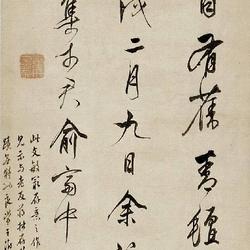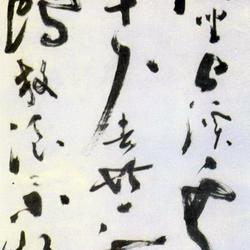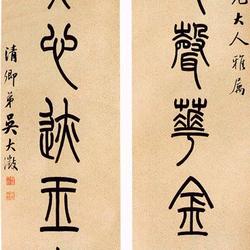























The mid-Qing Dynasty was a period of great change in the history of Chinese calligraphy. The rise of stele studies impacted and changed the weak trend of calligraphy that dominated the world in the early Qing Dynasty. The calligraphy world showed a strange and prosperous scene. At this time, there were many calligraphers who advocated stele studies, but it was Deng Shiru who truly became a practical example of stele studies. His emergence marked the maturity of the stele school using brushes to write steles from the Wei, Jin, Southern and Northern Dynasties, and even Han dynasties on rice paper. The stele school has created its own style of stele school by extensively absorbing traditional nutrients and integrating them.
Deng Shiru was born in Huaining, Anhui. His original name was Yan, and his courtesy name was Shiru. He was also nicknamed Nianbo. He was from Wanbaishan. He avoided the name taboo of Emperor Renzong of the Qing Dynasty, so he adopted the pseudonym Xing. Born into a poor family, his ancestors' "latent virtues are not shining brightly" character, "study and practice are solid" studies, and Gao'an's rebellious character have a subtle influence on his growth. When he was about 20 years old, he began a lifelong traveling career, wandering around the world, looking for teachers and friends everywhere. Throughout his life, along with hard work and self-improvement, his entire life was devoted to art. He does not seek fame, does not admire glory, is not moved by external things, does not enter an official career, and always maintains his true character as a commoner. This is a pure artist who goes his own way and lives a free and easy life.
People at that time spoke highly of Deng Shiru's calligraphy skills, saying that he was "excellent in all four parts and ranked first in the country." His calligraphy was most outstanding in seal script, and the success of seal script lies in small seal script. His Xiaozhuan script, based on Si and Bing's masters, is slightly longer in structure, but creatively blends the official script writing style into it. He boldly uses long edges and soft brush strokes, and ups and downs, which greatly enriches the brushwork of seal script, especially the seal script in his later years. , the lines are round and thick, powerful and boundless, reaching the state of transformation, creating a model of seal script for the Qing Dynasty, and making an immortal contribution to the development of seal script art. Official script has benefited greatly from long-term immersion in the practice of Han steles. It can write official scripts in seal script, and with the power of Wei steles, its style is naturally unique. The regular script did not start from Tang regular script, but went back to its origins and directly adopted Wei stele. It mostly used square brushes, and the movement of the strokes contained the official meaning. The structure did not seek to be fair with the method of horizontal light and vertical weight, left low and right high, and elegant. The ancient, majestic and simple architecture is incompatible with the current customs of the pavilions, showing the spirit of courage to explore. Comparatively speaking, his cursive writing skills are not as strong as those of seal script and official script. This is the view of most people and will not be repeated here. Deng Shiru's seal cutting art is also worthy of special mention. I will discuss it with you in ancient seal cutting.

















